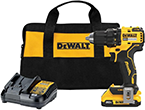Troubleshooting Dishwasher Problems
How many times have you come home from a long day at the office, expecting to be able to have a nice yummy dinner on your freshly cleaned dishes, only to open up the dishwasher to find that they are still dirty after being washed? Troubleshooting dishwasher problems is something that every person should know at least the basics of. Unfortunately, this is not always the case. Here are a few simple ways that you can troubleshoot your dishwasher problems.
- Scrape the dishes. Did you scrape your dishes off before you put them into the dishwasher? Surprisingly many dishwashers will not be able to clean off all kinds of food particles. In order to make it a little easier for your dishwasher to clean, make sure that you at least scrape (not wash) the dishes before you place them into the dishwasher. This means that you don't leave any spaghetti noodles stuck to the plate, or that large pieces of food have been removed before placing the dish into the dishwasher.
- Properly load the dishwasher. Was the dishwasher properly loaded? If you do not properly load the dishwasher, you will not be able to get all of your dishes clean. Most often this means that you have large cake pans, baking dishes, pots, or pans on the bottom shelf. This will prevent the vast majority of the water from getting to the top shelf, and thereby decreasing the amount of cleaning power your dishwasher has.
- Check the spin arm. Remove the bottom shelf of the dishwasher and check the spin arms. These are the arms that spin around and throw water everywhere in the dishwasher. Over time the little holes that the water comes out of can get clogged. It doesn't matter if they become clogged from calcium buildup or from food particles that have gotten dried onto the arms. If the arm holes are not cleaned every so often, then the cleaning power of your dishwasher decreases.
- Check the drain screens. Periodically you will need to check the drain screens along the bottom of the dishwasher. The reason for this is that over time your screens can become clogged with food, and this food will be thrown around the dishwasher, defeating the main purpose of the dishwasher.
Finally, if you have checked all of these issues and you still find yourself with dirty dishes after using the dishwasher, then you have a problem. Call in a professional service man to take a look at the appliance for you, but be sure that you explain that you have checked these common problems.
Author Bio
Doris Donnerman
Doris is a jack of all trades, writing on a variety of topics. Her articles have helped enlighten and entertain thousands over the years. Learn more about Doris...
Alternatives to Cupboards
Are you tight on space in your home or apartment? It always seems that we have more kitchen gadgets to store than space ...
Discover More
Your Car Horn won't Stop Blowing
Honking a car's horn seems to be a favorite pastime with some people. But what do you do if your horn starts blowing and ...
Discover More
Problematic Watering
Can you recognize the signs of problematic watering in your garden? Surprisingly, one of the largest root causes of many ...
Discover More
More Home Improvement Tips
Kitchen Cabinet Design
The cabinets in your kitchen should meet your specific needs. Choose the right cabinets for ultimate efficiency and ...
Discover More
Refinishing Kitchen Cabinets
Refinishing kitchen cabinets can bring much needed life and vitality to any kitchen, and is quite often less expensive ...
Discover More
Replacing Your Refrigerator
Refrigerators are a vital necessity in anyone's kitchen, and they get a lot of use and abuse. Due to the very nature of a ...
Discover More

Comments